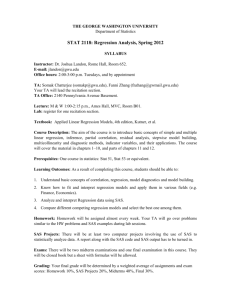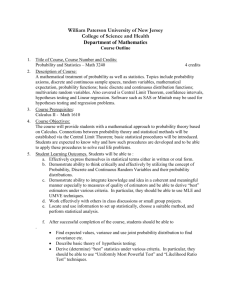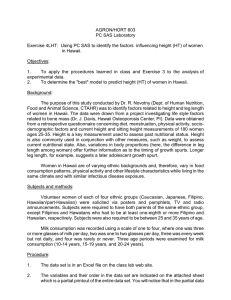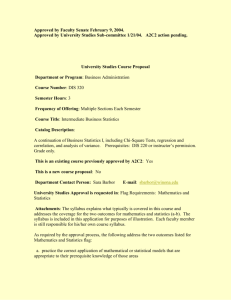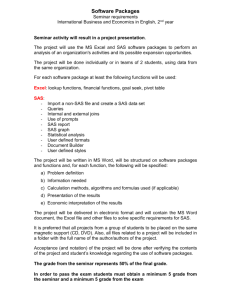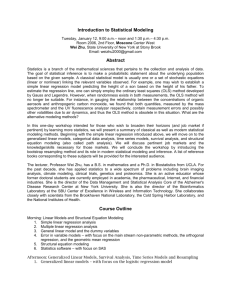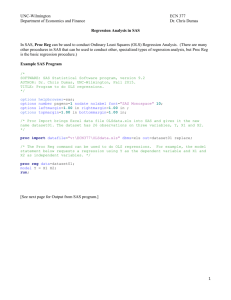Statistical Computing - Math 332
advertisement
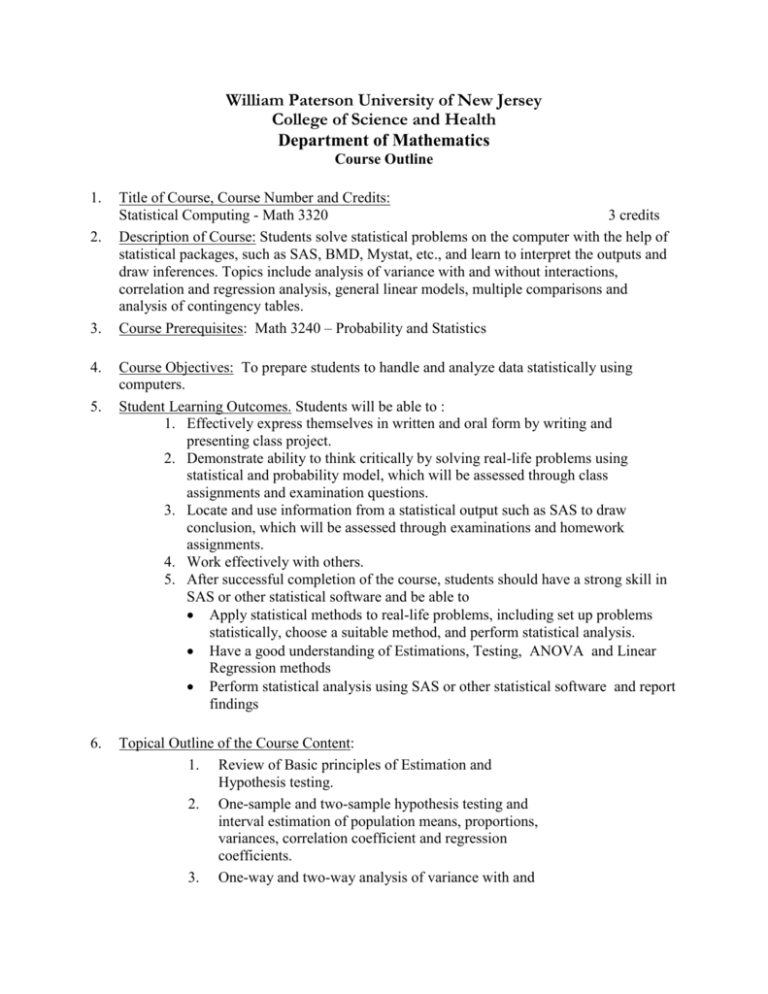
William Paterson University of New Jersey College of Science and Health Department of Mathematics Course Outline 1. 2. 3. 4. 5. 6. Title of Course, Course Number and Credits: Statistical Computing - Math 3320 3 credits Description of Course: Students solve statistical problems on the computer with the help of statistical packages, such as SAS, BMD, Mystat, etc., and learn to interpret the outputs and draw inferences. Topics include analysis of variance with and without interactions, correlation and regression analysis, general linear models, multiple comparisons and analysis of contingency tables. Course Prerequisites: Math 3240 – Probability and Statistics Course Objectives: To prepare students to handle and analyze data statistically using computers. Student Learning Outcomes. Students will be able to : 1. Effectively express themselves in written and oral form by writing and presenting class project. 2. Demonstrate ability to think critically by solving real-life problems using statistical and probability model, which will be assessed through class assignments and examination questions. 3. Locate and use information from a statistical output such as SAS to draw conclusion, which will be assessed through examinations and homework assignments. 4. Work effectively with others. 5. After successful completion of the course, students should have a strong skill in SAS or other statistical software and be able to Apply statistical methods to real-life problems, including set up problems statistically, choose a suitable method, and perform statistical analysis. Have a good understanding of Estimations, Testing, ANOVA and Linear Regression methods Perform statistical analysis using SAS or other statistical software and report findings Topical Outline of the Course Content: 1. Review of Basic principles of Estimation and Hypothesis testing. 2. One-sample and two-sample hypothesis testing and interval estimation of population means, proportions, variances, correlation coefficient and regression coefficients. 3. One-way and two-way analysis of variance with and Statistical Computing - Math 3320 4. 5. 6. 7. 8. 7. 8. 9. 10. 11. 12. 13. 14. without interactions. Analysis of variance for factorial designs. Linear regression - Simple and multiple, interpretation of R2 Examination of Residuals General linear models - stepwise regression and analysis of covariance Multiple comparisons. Analysis of contingency tables Log-linear models Guidelines/Suggestions for Teaching Methods and Student Learning Activities: Lectures and classroom discussions. Series of Projects to be done using SAS on the lab computers. Guidelines/Suggestions for Methods of Student Assessment (Student Learning Outcomes) Through quizzes, tests, final examination, homework and projects. Suggested Reading, Texts and Objects of Study: 1. Statistics Today, A Comprehensive Introduction, Byrkit, Donald R., Addison Wesley, Latest Edition 2. Applied Statistics & the SAS Programming Language, Cody and Smith, 1991, 3rd Edition, North- Holland Bibliography of Supportive Texts and Other Materials: A User's Guide to SAS, 2001. Preparer’s Name and Date: Prof. E. Phadia and A. Taraporevala. Fall 1994 Original Department Approval Date: Reviser’s Name and Date: Wooi K. Lim. Mandeleine Rosar, Donna Cedio-Fengya Spring, 2005 Prof. Z. Chen – Spring 2000 Departmental Revision Approval Date: Page 2 of 2

